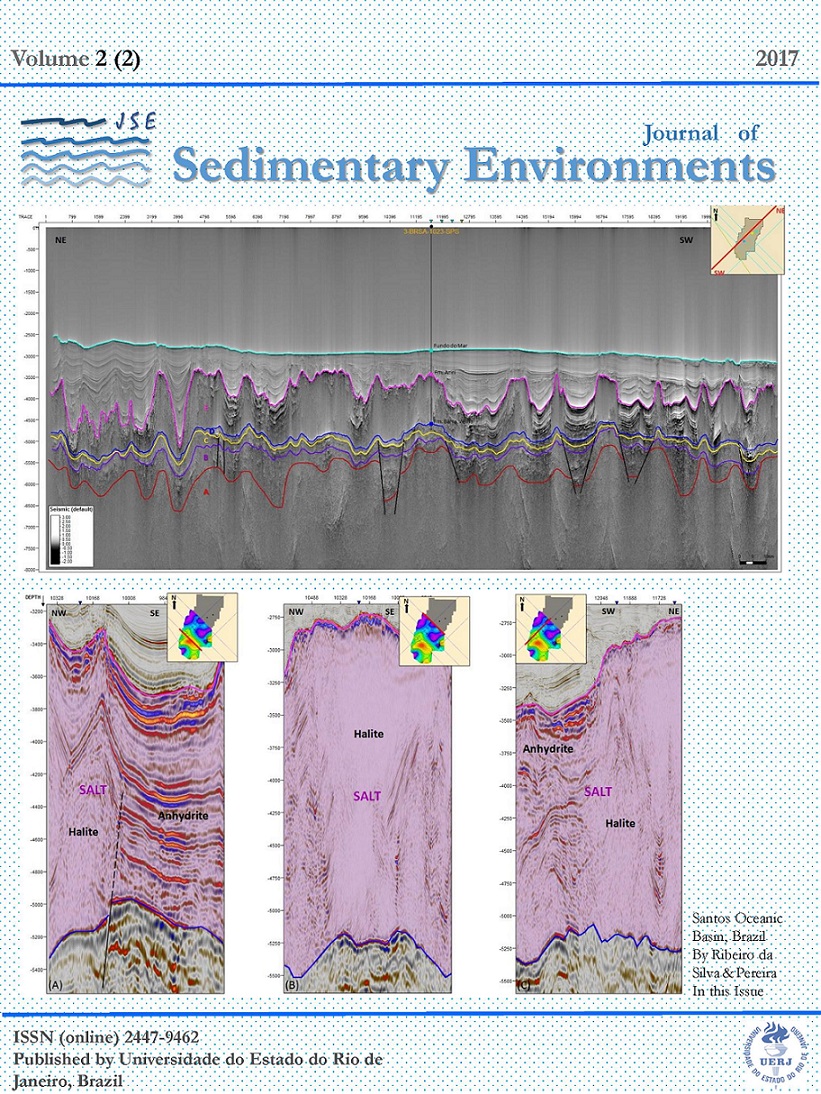ASSESSMENT OF ANTHROPIC SOURCES THROUGH PB ISOTOPES IN SÃO DOMINGOS BASIN, RIO DE JANEIRO, BRAZIL
DOI:
https://doi.org/10.12957/jse.2017.29896Keywords:
Pb isotopes. Sediments. Environmental Quality Assessment. Pesticide. Pollution.Abstract
Sediments from São Domingos Basin were analyzed for Pb isotope composition aiming to characterize the contamination by metals, in an area of tomato production with intense use of pesticide. Located in the city of São José de Ubá, Rio de Janeiro State, Brazil, an important tomato producer, that basin is an environmental laboratory due to the crop activity. This work aims to trace the anthropic activity in the basin using Pb isotope composition and comparing the results with other similar works. Sampling was carried out using stream 23 bottom sediments samples. The 200 mesh (0.075 mm) fraction was leached (using HNO3) and residues were dissolved by HF. Samples were analyzed by two different mass spectrometer methods: leaching in ICP-MS, and leaching and residue in TIMS. For TIMS analysis, Pb was separated by ion exchange columns. The results define Pb/Pb isotope signature groups interpreted as different sources of Pb. The samples analyses yielded different Pb compositions, probably resulting from active pollutants which were transported by the rivers and provided by mixed sources. The 206Pb/207Pb ratios, applied in environmental studies, are used to trace pollution sources in this work. The results of ICP-MS and TIMS show 206Pb/207Pb values from 1.093 to 1.333 from leaching and 1.143 to 1.490 from residues. Each method has results that can be separated in two groups. The values from the first group are associated with gasoline and geogenic (Ribeira Belt Neoproterozoic rocks) sources and have the highest Pb concentration. The values of the second group may be interpreted as sewage and unidentified source, probably related to the pesticide used in the tomato crops, and have the lowest Pb concentration. Hence, gasoline and natural source are the main metal contributions. Both methods show similar values and complete each other; however, TIMS shows better precision than ICP-MS.
Downloads
Published
Issue
Section
License

Journal of Sedimentary Environments (JSE) is licensed under a Creative Commons Attribution-Noncommercial-Share Alike 4.0 International License.

